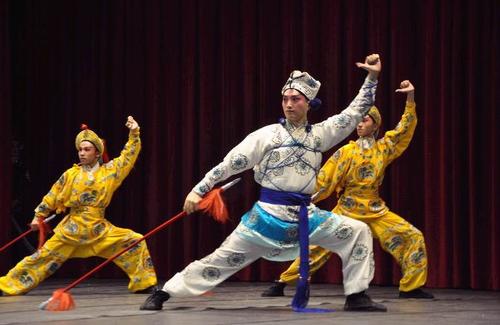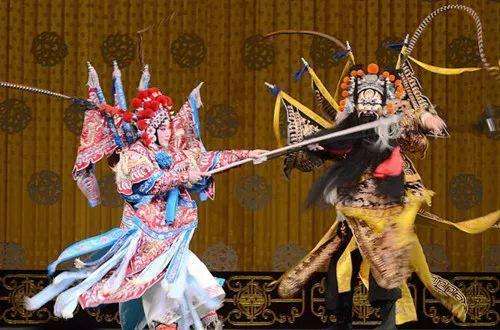Peking Opera Performance: Sing, Speak, Act, and Fight
3 min readTo Chinese people, going to the theater to enjoy Peking Opera or other artistic performances is known as “seeing plays.”What is a “play”in the Chinese context? In Peking Opera,”a play”is not so much the story or plot but a world of images created onstage,a wonderful arena of harmony between sentiments and settings.

The “play”or “world of images”created by Peking Opera naturally relies on the plot provided by the script, and more importantly on the performance of the actors. However, to form a “world of images”in Peking Opera, the plot of a story provides only the framework and background, while the charm is produced by the actors’ performances. Mei Lanfang (1894-1961), the greatest Peking Opera artist, once remarked that the feature of the art of Peking Opera is “actors being at the center.”Peking Opera actors are the crux in creating a world of images onstage.

Dou Erdun in the Peking opera stealing an Imperial Horse God Erlang in the Peking Opera Monkey King Wreaking Havoc on the Heavenly Court The performance of a Peking Opera actor can be summarized into four basic aspects, of singing, speaking, acting, and fighting, the core of which is a combination of song and choreography.

Singing is of utmost importance in the performance of Peking Opera, because first of all, Peking Opera is a singing art. Any famous Peking Opera boasts several wonderful arias that are well known and popular with audiences. The charm of the melodies usually embodies the sublime realm of the art of Peking Opera. Unable to appreciate the magic of Peking Opera arias, one would fail to enjoy the profound beauty of the art itself.

Speaking refers to character monologues and dialogues, which serve to propel the development of the story. Speaking, like singing, needs to be executed in an appealing way.
The splendor of Peking operacostumes
Acting and fighting mean that actors employ physical movements to express the emotions of the characters and the circumstances. Acting includes body movements and eye movements, solo dancing or group dancing, etc. Most of the dancing is choreographed movements from everyday life. Fighting is choreographed martial arts and acrobatics to depict fight or battle scenes. As the art of Peking Opera depends on movement to depict events, actors are given much room to perform on the stage. In the opera Picking up the Jade Bracelet, the young woman Sun Yujiao and the young scholar fall in love with each other, their eyes affixedon each other as if a thread connected them. Then, as Matchmaker Liu uses her pipe to pull the “virtual”line up and down, the young couple’s eyes accordingly move up and down. These actions produce great humor and add much significance to the performance. Acting and fighting serve the whole “play”or the “world of images,”but at the same time they are themselves a beautiful art in both form and skill. For example, in King Chu Bids Farewell to His Concubine, artist Mei Lanfang performed a sword dance in a miraculously skillful way, which became very popular with audiences. This is a type of beauty in form. As for the beauty of skill, this usually includes some very difficult acrobatic movements, often referred to as “superb skills.”
The uniqueness of performances in Peking Opera lies in the fact that the singing, speaking, acting, and fighting, all focus on one or two actors in the play.
These performers used to be called “jue’ er,”hence “mingjue”was used to refer to famous actors or actresses. In this sense, the world of imagery created in Peking Opera mainly relies on the singing, speaking, acting, and fighting of actors, especially in the performance of the famous plays. This is the biggest difference between Peking Opera and other forms of performing arts in terms of aesthetic appreciation. And the remark-“Peking Opera is the art of performers”-well describes its quintessence.
The art of Peking Opera has a history of more than 200 years, and the practice and experience of countless Peking Opera artists prove that the aesthetic beauty of the art lies in none other than this fact.








